Are you a landscape designer or gardener looking to add Mediterranean flair to your client’s outdoor space? Look no further! In this guide, we will provide you with all the necessary information and tips on how to design a stunning Mediterranean garden that will leave your clients in awe.
Mediterranean gardens are renowned for their vibrant hues, abundant foliage, and serene ambiance. They epitomize the essence of the Mediterranean lifestyle: warm, welcoming, and brimming with vitality. With a firm focus on crafting a stunning and functional outdoor haven, these gardens have garnered widespread appeal among homeowners worldwide.
But designing a Mediterranean garden can be tricky if you don’t know where to start. That’s why we have put together this comprehensive guide to help you transform your client’s outdoor space into a Mediterranean paradise.
What Is A Mediterranean Garden?
Mediterranean gardens are a captivating tribute to the vibrant cultural heritage and diverse natural landscapes in countries surrounding the Mediterranean Sea. These enchanting gardens, originating from the historical landscapes of Italy, Spain, Greece, and southern France, have gained popularity for their ethereal atmosphere that conjures images of leisurely afternoons, fragrant blossoms, and the gentle buzz of bees.
But what truly defines a Mediterranean garden?
The Mediterranean region is known for its hot, dry climate with rainy winters. It’s also home to a diverse range of cultures and histories, which have influenced the unique style of these gardens. From ancient Greek and Roman civilizations to Moorish and Arabic influences, Mediterranean gardens blend different cultural elements.
Common Features of a Mediterranean Garden
Mediterranean gardens are designed to extend indoor living spaces, focusing on creating intimate and inviting outdoor areas. The overall aesthetic is relaxed and romantic, emphasizing natural elements.
Here are some key features that define a Mediterranean garden:
- Water Features: It’s common to find fountains, pools, and waterfalls in Mediterranean gardens inspired by the famous Moorish gardens of Alhambra in Spain. Water creates a soothing backdrop and helps cool down the surrounding area.
- Plants and Flowers: Mediterranean gardens are characterized by diverse plants and flowers that thrive in hot, dry climates. Lavender, rosemary, thyme, and other herbs are popular for their fragrance and culinary uses. Olive, citrus, and succulents add to the authentic Mediterranean feel.
- Terracotta Pots and Tiles: The use of warm-toned terracotta pots and tiles is a nod to the region’s rich history and adds a rustic charm to the garden. They are often used as planters, pathways, or decorative elements.
These features, among others, create a unique and inviting atmosphere in Mediterranean gardens.
How to Create a Mediterranean Garden
A Mediterranean garden adds an exquisite, serene, and inviting ambiance to any outdoor area. This gardening style has gained popularity for its adaptability to different climates and ability to create a vibrant and flourishing space.
Designing a Mediterranean garden for your client necessitates meticulous planning and thoughtful deliberation. However, the outcome is a breathtaking and welcoming outdoor sanctuary that will be cherished for years. In the following sections, we will go through the fundamental components of a Mediterranean garden and offer invaluable insights on how to successfully craft one for your client.
1. Gravel Paths
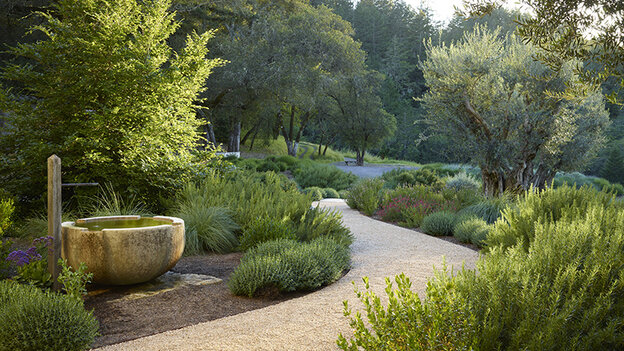
An element of a Mediterranean garden is using gravel as ground cover. This design choice not only adds a rustic aesthetic but also helps to retain moisture in the soil, which is crucial for plant health in hot climates. Incorporating this into a pathway allows for the beautiful, natural look of gravel to be utilized while also serving a functional purpose.
In addition to their practical benefits, gravel paths add texture and visual interest. The various sizes and colors of gravel available can create a unique and visually dynamic path that complements the overall design of the garden. For example, using larger stone pebbles in shades of beige and gray can add a touch of elegance to the path, while smaller gravel in shades of red and orange can add a pop of color reminiscent of the Mediterranean landscape.
2. Potted Plants and Containers
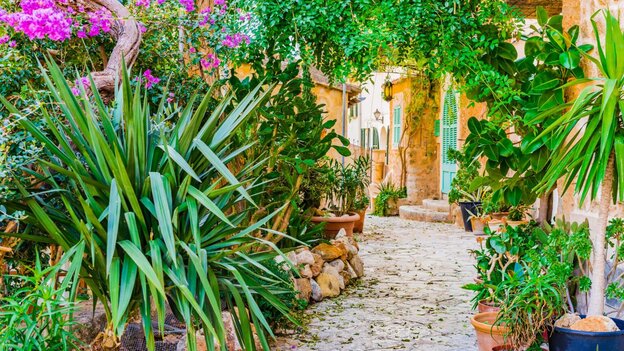
Pots and containers are essential design elements when creating a Mediterranean-style garden for your client. They add personality, charm, and character to any outdoor space, making it feel warm and welcoming. As a landscape designer, you must select the right pots and containers to achieve the desired look.
Terracotta pots are the go-to option for a Mediterranean garden. These rustic, earthenware pots are reminiscent of traditional Mediterranean homes and gardens. They come in various shapes and sizes, from small pots for herbs to large urns for statement plants. When choosing terracotta, opt for unglazed ones, as they will develop a beautiful patina with exposure to the elements over time.
In addition to terracotta, you can also incorporate Cretan-style urns in your design. These large, decorative pots are commonly found in Mediterranean gardens and add a touch of elegance to the space. They often feature intricate patterns and designs, which can complement the overall aesthetic of the garden.
3. Water Features Are A Must
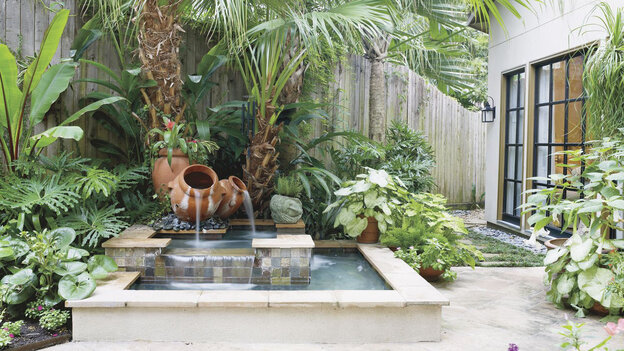
Water features have adorned gardens for centuries, and it is no surprise that they are an essential element in Mediterranean gardens. The region’s warm climate beckons for refreshing components, and water is one of the most effective means to accomplish this.
Not only do water features help cool the air in the heat of summer, but they also add a delightful dimension to any garden. The sound of trickling water and the glimmer of sunlight dancing on its surface can create a calming and serene atmosphere, perfect for relaxing or entertaining.
A popular type of water feature in Mediterranean gardens is a shallow trickle fountain. These fountains typically consist of a small basin filled with water, from which water gently flows through one or more spouts into a larger basin below. The sound of the water cascading down creates a soothing ambiance and attracts birds and other wildlife to your garden.
4. Incorporate Mediterranean Tiles
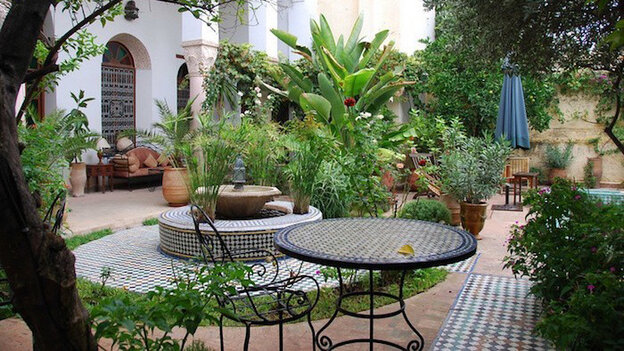
Mediterranean tiles offer a multitude of advantages as a design element, with one of the key benefits being their remarkable versatility. These tiles are available in a diverse range of colors, patterns, and sizes, allowing for the creation of a truly unique and customized aesthetic for your client’s garden. Whether you desire to infuse a vibrant burst of color or craft a subtle yet intricate pattern, there exists a Mediterranean tile perfectly suited to fulfill your design aspirations.
In addition to their versatility, Mediterranean tiles are also durable and low maintenance. They are made from high-quality materials such as terracotta, ceramic, and porcelain, which can withstand harsh weather conditions. This makes them the perfect choice for outdoor spaces that are exposed to the elements. Furthermore, these tiles require minimal maintenance and can easily be cleaned with a simple mop or sponge.
5. Shaded Seating Areas

When designing a Mediterranean garden for your client, you should consider incorporating shaded seating areas as a key design element. Not only will this provide relief from the heat, but it will also add character and charm to the overall aesthetic.
One way to achieve this is by installing pergolas or other structures that can provide shade while still allowing natural light to filter through. These can be made with various materials such as wood, metal, or even cloth. By adding climbers such as vines or bougainvillea to these structures, not only will you enhance the shade provided, but you will also bring in a touch of greenery and color.
6. Drought-Hardy Plants and Succulents
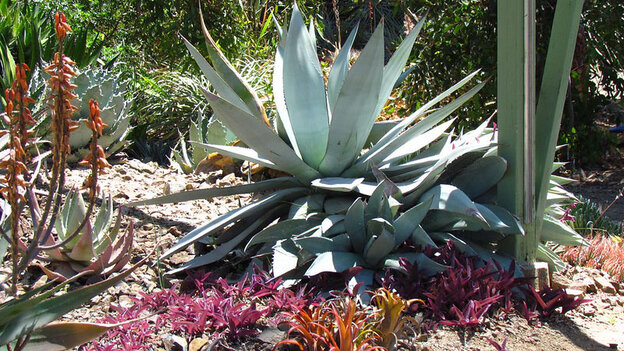
The Mediterranean climate is characterized by hot, dry summers and mild winters. This makes it a perfect environment for plants that are adapted to drought conditions. By choosing the right mix of drought-tolerant flowering plants, you can create a stunning garden that will thrive even in the driest of months.
A popular plant choice for a Mediterranean garden is bougainvillea. With its vibrant colors and ability to withstand hot and dry weather, this plant is a must-have for any designer looking to create a Mediterranean oasis. Another popular choice is lavender, known for its beautiful purple flowers and aromatic scent.
Geraniums are another great option for a Mediterranean garden. With their variety of colors and ability to thrive in dry conditions, they are a versatile plant that can be used in borders, containers, or as ground cover. Succulents, such as agave and aloe, are also excellent choices for adding versatility to the landscape.
7. Incorporate Fruit Trees
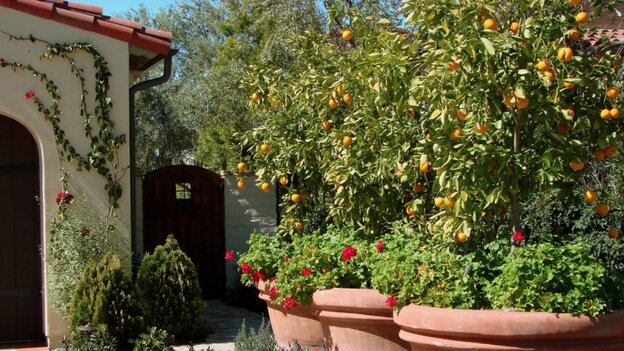
Fruit trees are the perfect addition to a Mediterranean garden for several reasons. First and foremost, they thrive in warm and sunny climates, making them ideal for Mediterranean regions. They also require minimal maintenance, allowing your client to focus on relaxation and enjoyment rather than constant upkeep.
With their varying heights, shapes, and colors, they can also add depth and texture to the landscape. They also provide shade and privacy when strategically placed around the garden.
Moreover, incorporating fruit trees into the garden promotes sustainability and self-sufficiency. Your client will have access to fresh fruits right in their own backyard, reducing the need to purchase produce from stores. This can also be an environmentally friendly choice, as it reduces the carbon footprint associated with food transportation.
8. Topiaries and Structured Hedges
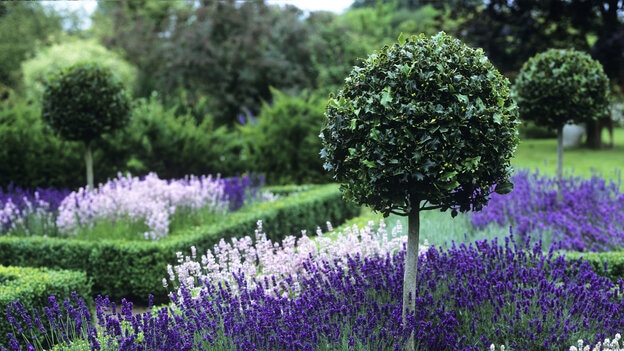
in the Mediterranean, topiaries and structured hedges have been used as a design element for centuries. They were first introduced by ancient civilizations such as the Greeks and Romans, who viewed them as a symbol of prosperity and sophistication. Today, they are still widely used in Mediterranean gardens and have become a staple for creating a sense of elegance and order.
One of the main reasons topiaries and hedges are so popular in Mediterranean gardens is their ability to add structure and definition to an otherwise chaotic landscape. The natural, flowing lines of these gardens are complemented perfectly by the crisp, clean edges of a well-maintained hedge or topiary. This contrast creates a visually appealing balance and brings a sense of harmony to the overall design.
How Landscape Design Software Can Help Design A Perfect Mediterranean Garden
Designing a Mediterranean garden requires extensive knowledge of plant species, color schemes, and layout. With landscape design software, you no longer have to spend hours researching and drawing by hand. The extensive plant library and pre-made templates allow you to easily experiment with different combinations until you achieve the desired result.
In addition, the 3D visualization feature of Contemporary Style Design allows you to present a realistic image of the proposed garden to your clients. This not only saves time and effort but also impresses customers with a visual representation of their dream garden. This can also help in upselling services as clients can better understand the potential of their space.
With Contemporary Style Design, you can easily add or remove elements from the design and see how it affects the overall look of the garden. This level of flexibility and control allows for quick iterations, making it easier to cater to clients’ specific requests and preferences.




